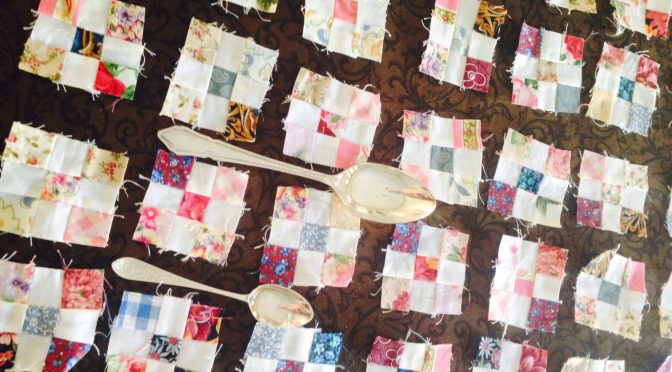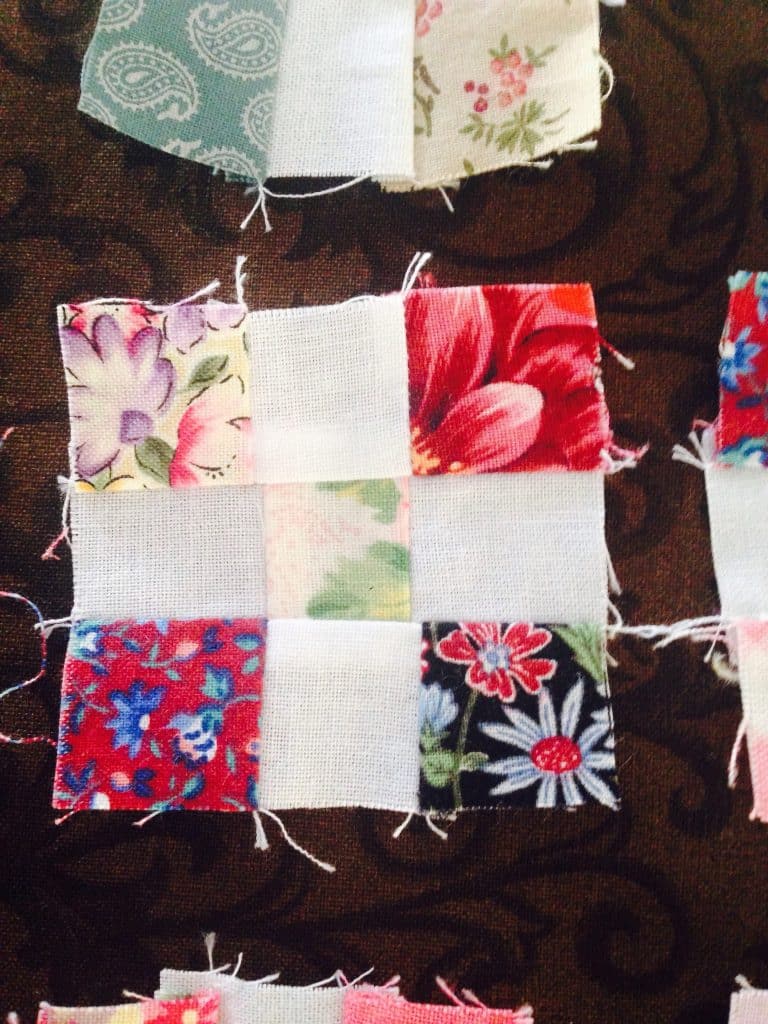Adorable Nine Patches
Hello Dear Friends and Readers, and a warm welcome to today’s post. Maybe it is a bit ridiculous however, I wanted to give it a try and so I saved my little 1” x 1” squares and made these pretty little numbers!
Nine Patches are adorable but these are extra sweet finishing at 2″ x 2”.
Adorable Nine Patches susies-scraps.com
Referring back to my post on Obsession with Pre- Cuts / Make Your Own. Obsession with Pre Cuts / Make Your Own
I included in my groups of pre cut squares, 5″, 4 1/2″,4″,3 1/2″,3″,2 1/2″,2″,1 1/2″ and 1″ squares. These are all from leftovers and scraps from previous projects. As I cut some of the 1″ squares I thought maybe I was being a bit ridiculous! But they are really adorable sewn up. Look what they made!
Again these pre cuts are already made and sorted into correct sizes, so it’s easy to have them next to the machine and just sew through a few from time to time. Use them as has been described by Bonnie Hunter, as “Leaders and Enders” between other things.
I may use these as a border eventually……By the way, that’s a teaspoon and a dessert spoon so you can get an idea of the size of the finished blocks. So go ahead. Get out your scraps. Cut them up. You will be amazed what you can come up with!

I hope you enjoyed this post. You may also like,
Charmed Nine Patch and Snowball Recipe
Hand Pieced Spool Blocks with Instructions
Happy Stitching,
Susie
© Susan Stuklis 2015


